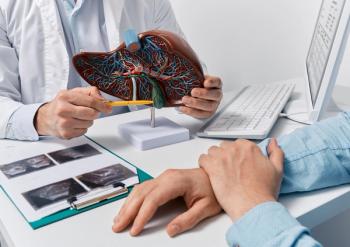
Novel Assessment Accurately Predicts Nutritional Risk in Patients With HCC
A novel model for gauging nutritional risk among patients with hepatocellular carcinoma (HCC) showed high accuracy and may provide a simpler, more targeted alternative to currently used nutritional risk models used for patients with cancer.
A novel model for gauging nutritional risk among patients with
Nutritional risk is defined as the potential for nutrition-related factors to lead to adverse outcomes, and the study authors noted that approximately half of patients with liver cancer are thought to be prone to nutritional risk based on past research. The extent of malnutrition is also correlated with worse prognosis.
While 2 models, the Nutritional Risk Screening (NRS)–2002 and Patient-Generated Subjective Global Assessment (PG-SGA), are currently relied on to gauge nutritional risk in patients with cancer, the authors noted limitations to these methods. The NRS-2002 is evidence-based, simple, and quick, but may not apply to patients with HCC, who are often bedridden and may be unable to measure weight or have other symptoms limiting the utility of the NRS-2002. This test also relies on patients being able to clearly answer an assessor’s questions, which may not be possible for patients with hepatic encephalopathy, for example. The PG-SGA comprehensively assesses tumor-related symptoms and helps direct resource allocation, but evaluators for this assessment must receive systematic training and experience that takes time and may not be feasible for staff with high daily workloads.
The study aimed to develop a simple, accurate model to assess nutritional risk in patients with HCC that could serve as a tool for oncology providers to identify patients at risk of nutritional deficiencies and facilitate early intervention and treatment.
Researchers at the Universiti Putra Malaysia and Qilu Hospital at Shandong University, Jinan, China, gathered retrospective cohort data from 220 patients with HCC who were admitted to the tumor ward between March 2021 and April 2022. The median patient age was 51 years, and the cohort included 162 males and 58 females.
Patients were stratified into either a normal nutrition group or a malnutrition group based on body composition analysis, predictive models were built, and then those models were simplified. Univariate analysis showed statistically significant differences in age, place of residence, tumor diameter, TNM stage, anemia status, viral hepatitis B status, NRS-2002 scores, and PG-SGA scores between the normal and malnutrition groups.
The area under the receiver operating characteristic curve (AUC) for the short-term nutritional risk model developed in the study was 0.990 (95% CI, 0.966-0.998), while the NRS-2002 and PG-SGA scales had AUCs of 0.928 and 0.923, respectively. In a final model using simplified integers for age, tumor diameter, TNM stage, and anemia, the AUC was 0.986.
Those aged 51 years or older were at a higher risk of malnutrition, likely due to declining liver function and chronic diseases. Larger tumor diameters, late TNM staging, and anemia were found to be at higher risk of malnutrition. “These factors may affect the patient's need to consume more energy and protein, and the resulting obstruction and bleeding may easily damage the digestion and absorption functions of the stomach and other digestive organs, thereby affecting tumor progression,” the authors wrote.
The study was limited by its retrospective nature, which limits the authors’ ability to determine causal relationships, and by the inclusion of only patients with isolated HCC and less severe liver impairment. Therefore, the findings may not be generalizable to all patients with HCC. However, the authors concluded that the novel short-term nutritional risk model is simple and accurate, making it a potentially useful tool for daily practice.
“The use of the prediction model has more advantages since the data is easy to obtain and requires no additional training, which is suitable for nursing staff to use in the rapid assessment of nutritional risk in patients with hepatocellular carcinoma,” the authors concluded.
Reference
Yu J, Lam SK, He L, Wang P, Cao Y. Development of a short-term nutritional risk prediction model for hepatocellular carcinoma patients: a retrospective cohort study. Sci Rep. Published online February 16, 2024. doi:10.1038/s41598-024-54456-4
Newsletter
Stay ahead of policy, cost, and value—subscribe to AJMC for expert insights at the intersection of clinical care and health economics.





























































